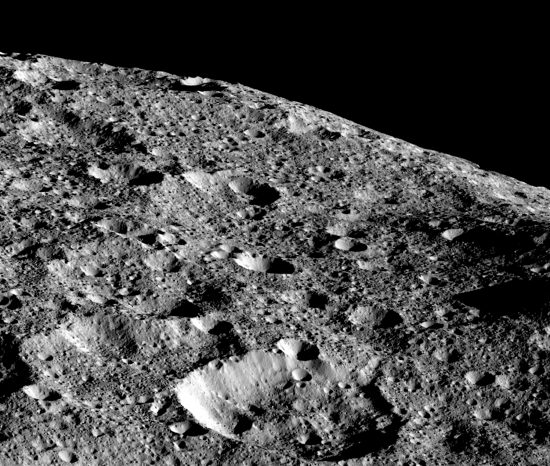
Jul 2, 2019
Investigating the dwarf planet, Ceres.
The Dawn spacecraft was launched on September 27, 2007. It began observing the asteroid Vesta on July 17, 2011 and then headed toward the dwarf planet, Ceres on September 5, 2012. Dawn entered orbit around Ceres at 7:39 AM EST on Friday, March 6, 2015 where it has since remained.
As written in the past, Ceres is a devastated world: Craters there are out of proportion to the dwarf planet’s size. Rilles and trenches are gouged into its surface, revealing bright material just below scorched and blasted terrain. Other objects in the Solar System exhibit similar characteristics. Vesta, another dwarf planet in the asteroid belt, appears to be a smaller twin of Ceres, with comparable formations.
Ceres also resembles the planet Mercury, since a common feature on Mercury are large craters with fractures and furrows running through them. Electrical activity on Mercury is evident. Indeed, the whole planet appears to exhibit nothing but electrical effects. The etched furrows radiating outward from some craters trace-out the paths of untold numbers of electric filaments. On Earth, those filaments would have been the largest lightning strikes ever witnessed.
In an experiment at Vemasat Laboratories, Dr. Cj Ransom created the same kind of etched furrow by shocking a thin layer of magnesium silicate with a 120 milliamp, 12,000 volt discharge for five seconds. He created radial gouges on a small scale equivalent to Ceres and Mercury at the large scale.
Another of the ways electricity manifests itself is like a plasma “drill bit”, cutting steep crater sidewalls—often with a “pinched up” mound in the center. Multiple filaments cut one crater within another, with one or more craters on the rims. V-shaped scars will often enter a crater in two or more places. No impact on the surface or volcanic eruption can create such features. Craters on Ceres are shallow, with melted floors and slumped sidewalls—not what is expected from meteor impacts.
Many Pictures of the Day point-out that electricity is not recognized as a change agent by consensus science. Most, if not all, large craters on Ceres are electrical in nature. They can be recognized by their steep sides, sharp rims, flat floors, a lack of blast debris inside the craters or strewn around them, fulgurites embedded in the sidewalls, and, sometimes, as mentioned, other craters on their rims.
When electricity passes over a solid body the current pulls charged material from the contact surface. Neutral dust and stones will be pulled along with the ionized particles. Craters formed by electric arcs are also circular because electromagnetic forces cause them to maintain right angles to the impact zone. Since two or more filaments rotate around the arc axis, it can excavate the aforementioned steep sidewalls.
If the surface is negatively charged, an arc will travel, sometimes eroding elongated craters. The arc might jump from high point to high point. Smaller craters on the rims of larger ones reveal this phenomenon. A series of craters in a line, otherwise called a “crater chain”, is another sign of arcing to a negatively charged substrate. Since electric arcs vary in strength from millisecond to millisecond, they burn chains of craters instead of smooth channels. In fact, the “smooth” channels seen on many objects are crater chains packed so closely together that they can no longer be distinguished.
According to a recent press release, Dawn will remain in orbit around Ceres for a long time. June 2016 marked the official end of its mission, but it continues to be refunded. It will circle the dwarf planet for a minimum of 50 years from its new, lower orbit, less than 50 kilometers above Ceres. It will not land as the NEAR-Shoemaker satellite landed on Eros, or like Rosetta landed on 67P. It will not be incinerated in an atmosphere like Galileo, or Cassini—especially as there is no atmosphere at Ceres. It will remain suspended.
The dwarf planets Vesta and Ceres add weight to the electrical theory of the Solar System that has long been proposed by Electric Universe advocates. Formations on moons and planets conform to that theory far better than conventional ideas.
Stephen Smith












